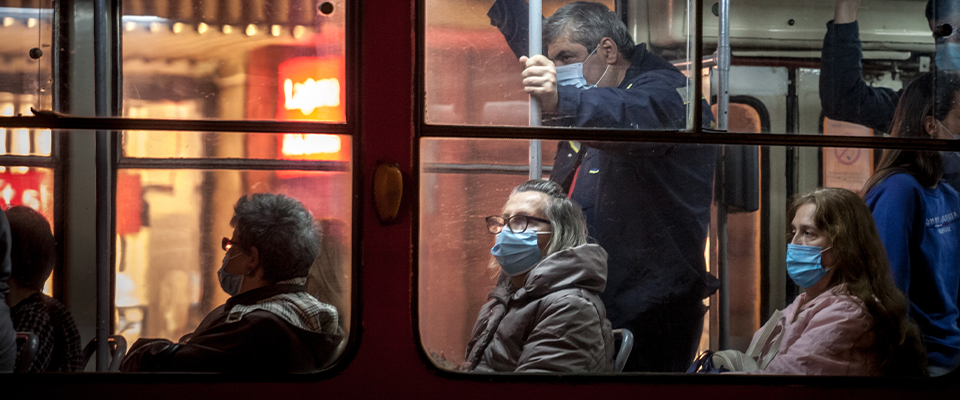Enacting one of the toughest vaccine mandates in the country, California Gov. Jerry Brown has signed a bill to require virtually all California school children to be vaccinated against potentially deadly diseases—or be home-schooled.
His quick action Tuesday morning was the final step for the new law, which had passed both the state Senate and Assembly with bipartisan support and makes California the 32nd state to deny vaccine waivers based on personal or moral beliefs, and only the 3rd state to deny waivers based on religious objections. The bill includes a clause to “grandfather in” unvaccinated children already in school until their next vaccine checkpoint (checkpoints will occur in kindergarten and 7th grade.) Opponents have threatened to sue contesting the constitutionality of the law, adopted after a fierce and emotional debate over vaccines, which virtually all medical experts say are necessary.
The measles epidemic earlier this year got everybody all het up about vaccination rates, and properly so. A serious—and easily preventable—disease established a toehold in the United States because we lacked the “herd immunity” typically conferred on inoculated populations. And the reason we were insufficiently protected, of course, is due to the “anti-vaxxers,” that small group of vociferous and media-savvy activists who insist that vaccines do far more harm than good.
It’s not that the anti-vaxx movement convinced most Americans to forego their jabs. It’s just that over the past several years, fewer of us have been doing it than in decades past. For California’s school-age children, the 2014 vaccination rate was 90.4 percent. You don’t get reliable herd immunity for a highly infectious disease like measles until you approach 95 percent. Hence the recent measles outbreak that first surfaced in Disneyland, ultimately infecting 166 people in 19 states and Washington, D.C.
Those figures deeply displeased John Swartzberg, an emeritus clinical professor at the UC Berkeley School of Public Health and an authority on infectious diseases, who has been at the forefront of the effort to make vaccines mandatory for school children. He was disappointed by the state legislature’s last pass at the issue, a 2012 bill requiring anyone who wanted a “philosophical exemption” from school-mandated inoculations to obtain a signed testimony from a physician confirming that vaccination counseling had been provided. Brown signed that earlier bill, but not before including an addendum that further exempted “people whose religious beliefs preclude vaccinations” from obtaining the requisite health practitioner’s signature; that one clause undercut the regulatory efficacy of the bill.
But the new bill, SB 277, is a lot tougher.
“Actually, it’s incredibly tight,” says Swartzberg. “And it was even tighter when it was first drafted in the Senate. At that point, it allowed for exemptions for kids who were home-schooled separately, but not for kids who were home-schooled in groups [from multiple families].” In the face of strong opposition, the group–home-school restriction was struck from the legislation, and it then sailed through the Senate and ultimately, the Assembly.
But the legislators have heard from opponents who fear that pharmaceutical companies are hiding damaging information about vaccines, who believe scientifically discredited claims that vaccines cause autism, and even, in the case of a spokesman for the Nation of Islam, that the bill is comparable to the horrific Tuskegee syphylis experiment. Supporters of the bill had overwhelming medical support and some emotional appeals of their own, including one from a father whose 7-year-old son, a leukemia survivor, is at risk of contracting illnesses from his unvaccinated classmates. (Babies are also among those unprotected from exposure because they are not yet old enough to be vaccinated, as are a tiny percentage of people for whom the vaccines fail to provide protection.)
Under the new law, all children will need an up-to-date vaccination record to attend school, unless they have a genuine medical contraindication. In other words, no more religious or lifestyle exemptions.
That’s not to say that the anti-vax movement is dead, of course. Vaccination opponents continue to cast the issue in a variety of ways, especially in freedom of choice dialectics, and say they’ll not only challenge the new law in court and attempt a referendum to overturn it. When people believe so fervently in something, they do not quietly admit defeat.
“Choice” increasingly seems the main rallying cry for the movement: Anti-vaxxers generally contend that the risk to constitutionally guaranteed rights is greater than the public health risks of eschewing inoculations. Laguna Hills pediatrician and vaccine skeptic Robert Sears has maintained that “If you are going to deny that constitutional right, there would have to be an enormous health risk to our society by not vaccinating the school.”
Vaccination advocates, of course, maintain that the public health risk of low vaccination rates is enormous. But the debate, like so many others, is best described as a palette of grays rather than stark black-and-white. Specifically, Swartzberg takes pains to differentiate between people who are deeply opposed to vaccination and those who are merely “vaccine hesitant.”
“A very small minority is fanatically opposed to vaccination,” says Swartzberg, “but they also seem to be masters of social media, so their numbers seem larger than they are. There are also a significant number of people who may feel hesitant about vaccination, mainly due to a lack of information. They are by no means ideologically opposed to vaccination. They just want what’s best for their kids, so they want to hear both sides of the story.”
Education levels are no sure guide to vaccine participation. The two states with the toughest vaccination laws—Louisiana and West Virginia—rank low on both education and per capita income, while the state with the highest child vaccination rate—Mississippi—ranked last among all the states in 2014 for both school performance and income. Further, anti-vax sentiment can run especially high in areas populated by the wealthy and highly educated: Western Sonoma County, for example, where a Kaiser study determined that 17.5 percent of youngsters lacked at least one of the inoculations considered de rigueur for 3-year-olds.
“People put a lot of credence into what their peers say. Peer contact, in fact, is far more powerful, more influential, than all the science in the world.”
“The Kaiser study shows these pockets of anti-vaccination sentiment,” says Swartzberg. “They’re often—but not always—in high-income areas. The current thinking is that it’s more a matter of peer interaction than income or education. People put a lot of credence into what their peers say. Peer contact, in fact, is far more powerful, more influential, than all the science in the world. So a small contingent of true believers can create a node of anti-vaccination opinion by simply interacting with a larger, complacent community.”
Certainly, opposition to vaccination has proved a powerful Internet meme. Anti-vax websites have proliferated in recent years, garnering considerable attention. And the talking points are compelling. Earlier this year, for example, a number of alternative health sites—including Health Impact News, Natural News and Vaccine Impact—maintained that U.S. government sources confirmed that zero deaths had occurred from measles in the U.S. between 2004 and 2015, but 108 fatalities were linked to measles vaccines. The claim was propagated widely.
But the skeptics’ website Snopes.com undercut such claims, noting that four U.S. deaths had been attributed to measles between 2009 and 2010, and that the Vaccine Adverse Event Report System (VERS), the source cited by the alt-health press for the vaccine deaths, takes pains to emphasize its data must not be employed for cause-and-effect correlations, noting on its website: “VERS collects data on any adverse event following vaccination, be it coincidental or truly caused by a vaccine. The report of an adverse event to VERS is not documentation that a vaccine caused the event….”
The World Health Organization recorded 145,700 measles-related deaths globally in 2013 alone—that’s 16 deaths every hour.
It could further be presumed that the low incidence of U.S. measles cases was simply evidence of the success of widespread vaccination.
Indeed the picture is much bleaker in swaths of the world where vaccinations are harder to come by and insufficiently prevalent to ensure herd immunity. The World Health Organization recorded 145,700 measles-related deaths globally in 2013 alone—that’s 16 deaths every hour.
The demonstrable efficacy of vaccines does seem to be making some inroads against anti-vax jeremiads. Polling by the Public Policy Institute of California recently found that two-thirds of Californians say unvaccinated children should be barred from attending public schools.
“The California Department of Health is reluctant to make any formal statement, but vaccination rates have really gone up recently,” says Swartzberg, “and though we don’t have hard data, the measles epidemic seems to have played a role. The real irony is that when vaccines are successful, they don’t impinge on the public consciousness. Because so many serious infectious diseases have been largely eliminated by vaccines, some people may think they aren’t needed, that their ‘dangers’ outweigh their benefits. They don’t understand that vaccines are the agents responsible for the general absence of serious outbreaks and epidemics.”
This story was updated June 30, 2015.



















